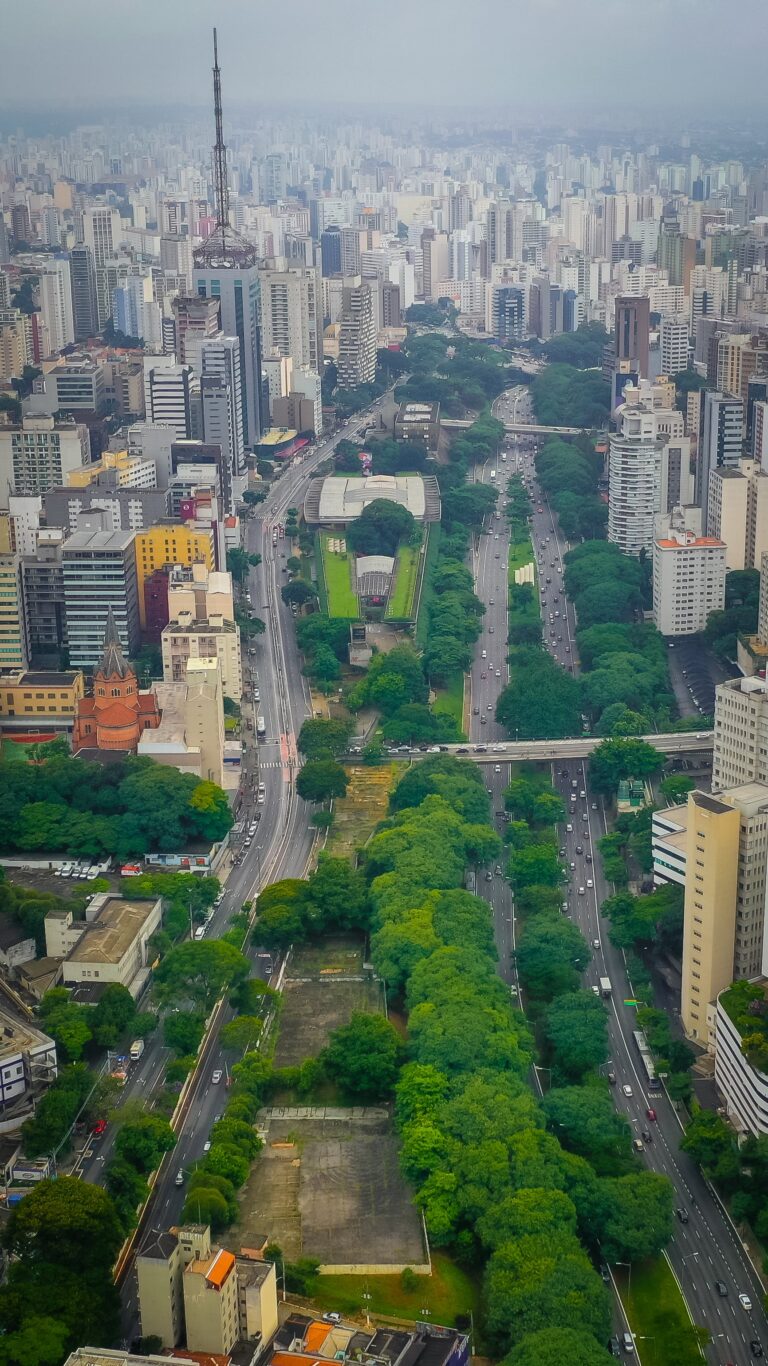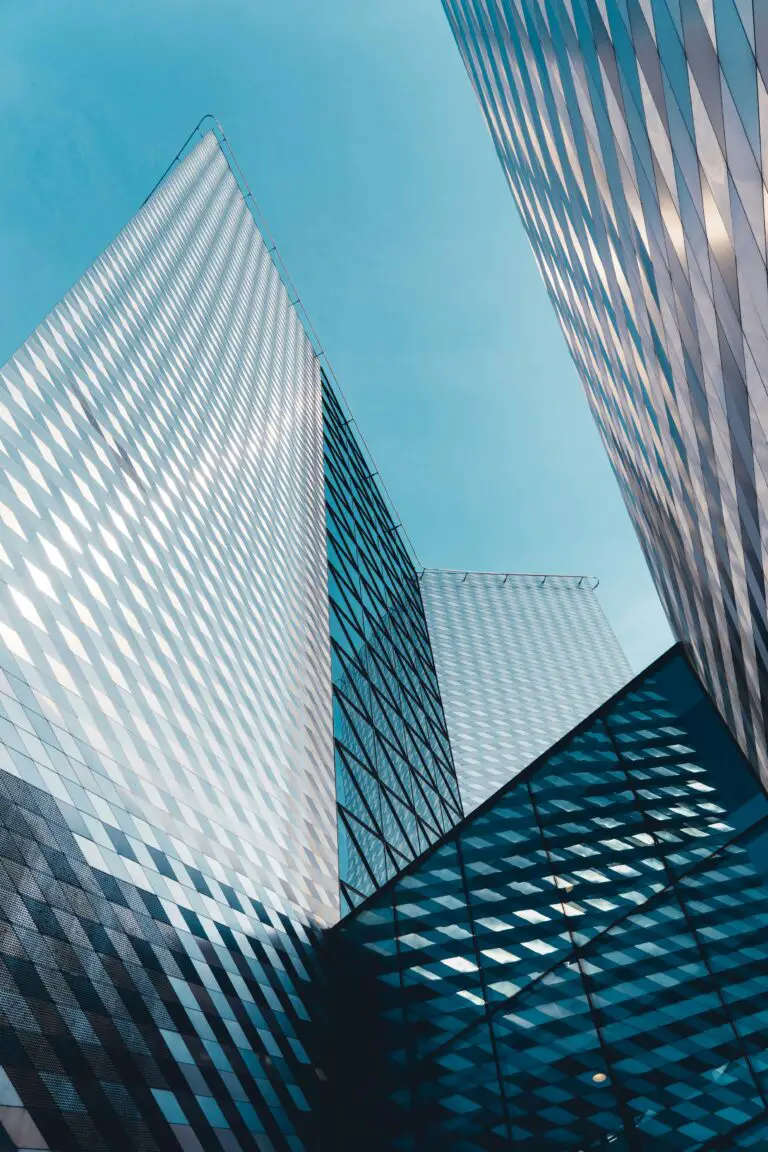Discovering the Senecio Skyscraper: An Introduction
An unassuming green tenant moving into high-rise homes and office spaces, the Senecio Skyscraper is rapidly becoming a lodestar for plant enthusiasts. This architecturally striking plant is celebrated for effortlessly infusing life into the angular, often monochrome vistas of urban environments. Stepping onto the scene with its tall, columnar build, it offers a fresh take on city greenery—worthy of its sky-high appellation.

Botanical brilliance is just the starting point with this one. The Senecio Skyscraper, a stalwart succulent, boasts fleshy, upward-stretching leaves, which retain water and empower it to withstand stretches without a sip. Resilient? Absolutely. But there’s more to it than just being another hardy houseplant. Its aesthetic adapts as adeptly as its biology does, slotting seamlessly into minimalist desktop arrangements or anchoring more lush and elaborate indoor garden designs. With such versatility, it’s a compelling addition to any plant-lover’s urban oasis.
Its growth habit reveals a skyscraper in miniature, reaching upwards, seeking the heavens, while demanding little room on your surface spaces. Whether sidled next to a bookshelf or supercharging the somber vibes of a business lounge, it’s a commitment that doesn’t cramp your style – or space. And it’s a plant that seems tailor-made for the trendy practice of mixing and matching succulent varieties, a nod to biodiversity in the concrete jungle.
What’s the real scoop on keeping a Senecio Skyscraper not just alive but thriving? It’s a topic well-covered in succulent care circles and you might be relieved to know that it dovetails nicely with the word ‘low-maintenance’. This plant isn’t just another pretty face; it’s got the chops to become a central feature in homes and hubs across the cityscape.
As urbanites continue to cultivate their personal green spaces and vertical gardens scale the walls of today’s modern dwellings, the Senecio Skyscraper is more than keeping pace; it’s setting the standard. It’s a living sculpture, an emblem of horticultural innovation, and a reminder that beneath the city’s hustle, the heart of nature can beat strong. The Senecio Skyscraper doesn’t just grow—it ascends, reshaping our interaction with nature, one leaf at a time.
Cultivating Skyscraping Beauty: Where to Start
Picture this: A verdant spire of cool blue-green, stretching towards the sky in your very own living space. That’s Senecio Skyscraper for you—a true vertical virtuoso among plants. Whether you’re an urban dweller eyeing a slice of the great outdoors or a suburban green thumb aiming to add some structure to your garden, this Senecio is your go-to guy. Let’s dive into how to get off to a towering start!
Senecio Skyscraper isn’t your average garden variety plant—literally! It has an aspirational growth habit that rockets upwards, emulating an organic skyscraper that’s sure to catch every neighbor’s eye. If you’re wondering how to plant this upwardly mobile flora, start with the basics: choose a spot that gets ample sunlight. Just like a towering building, your Senecio will soak in the rays and thrive. But remember, no one wants a leaning tower! So, ensure your pot or garden patch is well-drained to avoid any “foundation” issues.
Now, envision your Senecio as the tall centerpiece in a mixed succulent arrangement. Pairing Senecio Skyscraper with sprawling groundcovers like Sedum ‘Angelina’ creates a delightful contrast in form and texture. Moreover, consider height and color variations by adding rosette-forming Echeveria for a visually stunning effect.
First-time planter? No worries. This species is forgiving and hardy. Think of it like the self-sufficient high-rise of the plant world—it basically maintains itself once it has been properly situated. Watering is akin to occasional maintenance; let the soil dry out between waterings to prevent root rot. Think “rain shower,” not “flood.” Lastly, a regular dose of succulent-friendly fertilizer will keep your Senecio soaring to new heights.
So, why settle for the pedestrian when you can cultivate your personal green skyscraper? Embrace the vertical, indulge in the blue-green hues, and let Senecio Skyscraper redefine your view on botanical beauty. Don’t just garden, sculpt the air with living columns of unparalleled elegance.
Spiraling Upwards: Growth and Maintenance
Understanding the spiraling growth and the skyward ambition of your Senecio Skyscraper is essential in providing the care it needs to flourish. Like a bustling city reaching towards the heavens, this plant requires attentive nurturing to truly thrive in your green spaces. Let’s dive into the art of maintaining this towering beauty!
Sunlight Requirements: Basking in the sun is the Senecio Skyscraper’s equivalent of a perfect day out. Place it in a spot where it can soak up a good amount of indirect sunlight. Think of it as positioning a skyscraper to catch the city’s glow without being overshadowed by larger structures—your succulent’s growth depends on this strategic placement.
Watering Schedule: When it comes to hydration, this plant prefers a ‘less is more’ approach. Overwatering is like a flood in the city streets—it can cause root rot and other issues. Instead, water your Senecio Skyscraper deeply but infrequently, simulating the rare but nourishing desert downpour.
Soil Preferences: The foundation of any skyscraper is crucial, and the same goes for your plant. A well-draining soil mix provides the stability and aeration the Senecio Skyscraper needs, much like a building’s deep-seated pillars. Ensure the mix is porous enough to mirror the natural, arid conditions it thrives in—think sandy loam with added perlite or pumice for that urban-edge drainage.
Common Care Mistakes: Just as urban planners avoid certain pitfalls when designing a cityscape, you should steer clear of common errors in succulent care. Overcrowding can stunt growth and spread pests, much like a cramped city can lead to unnecessary chaos. Give your Senecio room to expand—allowing it to exhibit its natural elegance and height.
For a more in-depth look at what your senecio needs, consider visiting Devil Mountain Nursery’s detailed guide.

Embrace the Urban Jungle
With these pointers in mind, tending your Senecio Skyscraper becomes akin to urban planning. Architect a routine of strategic light exposure, a minimalist watering regimen, and soil that’s built to last. In doing so, you’ll curate an environment where your green giant can scale new heights—making a statement in your urban or home garden that’s as impressive as any city skyline.
Health and Troubleshooting: Keeping Your Senecio Thriving
Is your Senecio skyscraper not reaching for the clouds? Are you observing signs of distress like withering leaves or pesky bugs making a home in your green sanctuary? Fear not! We’re here to arm you with the knowledge to troubleshoot these common issues and keep your Senecio skyscraper standing tall and proud.
Battling Buggers: The Pest Problem
Let’s talk bugs. It’s a story as old as time – pests love plants, and your Senecio skyscraper is no exception. If you notice little critters crawling all over it, you’re witnessing a real-life drama unfold. But here’s the plot twist – you can be the hero! A simple solution of diluted neem oil sprayed liberally can evict those unwanted tenants. Remember, consistency is key; make it part of your plant care routine, and you’ll have a pest-free high rise in no time.
Rotting Roots: A Sign of Overzealous Affection
Too much water can lead to a flooded foundation, and we don’t mean in your apartment. Overwatering is like giving your plant too many hugs – it’s possible to love it too much. Senecio skyscraper’s roots can start rotting if they’re constantly swimming. The key is to let the soil dry out between waterings. Think of it as your plant’s personal lifesaver – it keeps it afloat, healthy, and thriving. And if you need a guide on that delicate balance, check our in-depth look at perfect plant growth, which lays out all the nitty-gritty details on watering do’s and don’ts.
Leaves Losing Luster: Discerning Discoloration Dilemmas
Leaf discoloration can turn your vertical paradise into a colorless dystopia. Yellow or pale leaves could scream “nutrient deficiency!” with a megaphone. Adjusting your fertilization strategy might just be the remedy. Add a succulent-specific fertilizer into the mix, and watch those colors intensify; your Senecio skyscraper will thank you with vibrant foliage. Remember, like adding a pinch of salt to a recipe, a little goes a long way.
Now, for a visual treat – behold the Senecio skyscraper in all its glory, not just as a model citizen in the plant community, but also as an example of resilience against common plant predicaments. (And yes, that’s your cue to check out the plant’s image below.)

While life throws curveballs at your Senecio skyscraper, take pride in knowing that you have what it takes to keep it standing tall. By understanding its needs and responding to its calls for help, you’re not just growing a plant; you’re cultivating a skyline in your own living space.
Companion Planting and Design Ideas
Integrating the statuesque Senecio Skyscraper into your garden isn’t just about filling space; it’s about creating a tapestry of color and texture that supports a thriving ecosystem. Let’s expound on the vast possibilities of merging this impressive plant with its horticultural cohorts.
Creating Harmony with Height and Hue
Consider the Senecio Skyscraper the high-rise of your horticultural landscape, a towering figure that demands attention. Partner it with low-growing groundcovers like creeping thyme or blue star creeper, allowing them to carpet the area at its feet, showcasing a contrast in size that’s both dramatic and complementary.
Choosing Companions Wisely
Some plants do more than look pretty together; they forge mutualistic relationships. Take lavender, for example, a fragrant neighbor that can bolster the Senecio’s resilience against common pests. Imagine walking through a garden where the architectural allure of the Senecio is enhanced by the soft, purple whispers of lavender—a sensory feast!
A Scene-Stealing Spectrum
Succulents often share similar care requirements with the Senecio Skyscraper, making them plant allies. Picture an arrangement showcasing the spiky, blue-tinged leaves of blue chalksticks against the Skyscraper’s silvery foliage—a duo that not only survives together but thrives, creating an interplay of colors and forms.
Don’t shy away from bold pairings; juxtapose the Senecio’s tall stature with the fiery reds of ‘Autumn Joy’ sedum or the vivid yellows of Black-Eyed Susans, constructing a living art piece that captivates and coexists.
In your green space, let the Senecio Skyscraper pierce the sky while its companions paint a harmonious scene below. It’s not just gardening; it’s designing a living sculpture that feeds the soul and the soil.

Reaping the Benefits: Why Go Vertical with Senecio
When it comes to maximizing your green space, nothing stacks up quite like the Senecio Skyscraper. This vertical virtuoso not only draws the eye upwards, adding a vertical dimension to gardens, but also plays a crucial role in improving the very air we breathe. Just picture it: your own urban oasis, where lush foliage purifies the atmosphere, one breath at a time.
Space-efficient and stylish, Senecio Skyscraper is the high-rise hero of horticulture. In places where horizontal space is at a premium, going vertical means you can grow more in less space. This isn’t just about having more plants; it’s about transforming cramped quarters into a verdant, vibrant environment. Think chic plant walls in boutique cafes, or a living mural in the confines of a cozy studio apartment. No matter the size, Senecio Skyscraper leverages every inch vertically.
Aesthetics aside, Senecio Skyscraper’s cascading greenery also has a direct impact on spatial perception. It draws the eyes upward, making any area appear larger. It’s not just an illusion; it’s strategic design. And let’s not forget the surprising splash of charm this plant can add to your dwelling. From avant-garde art studios to the minimalist modern office, it’s not just a plant—it’s a statement piece.
But how exactly does one incorporate these vertical vibes into their space? That’s where real-life examples serve as a green-thumbed guide. Imagine an eco-conscious bookshop, where each shelf is edged with trailing Senecio. Customers don’t just browse books; they immerse in an enchanting forest of knowledge. Or consider a trendy fusion restaurant, where the booths are each ensconced in their own private jungle, offering not just privacy but an experience for the senses.
In summary, the Senecio Skyscraper is more than just a plant. It’s a multi-dimensional powerhouse that brings eco-chic to new heights, transforms spaces, and enhances our quality of life. With a little creativity and strategic placement, integrating Senecio Skyscraper vertically can transform any ordinary room into an extraordinary escape.
Propagation Pointers: Growing Your Own Senecio Skyscraper
Ever gazed at a towering Senecio Skyscraper and wished you could replicate its statuesque beauty in your own garden space? Good news! Propagating this impressive green wonder is not only doable, but it’s also an incredibly rewarding endeavor. Let’s dive into the step-by-step guide and turn your propagation dreams into lush, leafy realities.
Setting the Stage for Success
Before we slice into the propagation process, it’s essential to gear up with the right tools. Think of it as assembling your gardening toolkit for architectural greatness. You’ll need a sharp pair of scissors or a knife, sterile and ready to make the cleanest cuts. A rooting hormone can also be a game-changer, acting like a growth catalyst for your fledgling cuttings.

Now, imagine you’re an architect surveying the land before building. For your Senecio Skyscraper, selecting a healthy parent plant is just like choosing the perfect plot of land. Look for robust stems with vibrant foliage, free from the clutches of pests and diseases, and you’ve hit the jackpot.
The Cut: Initiating a New Growth
With your tools at the ready, it’s time to take the plunge. Choose a stem from the Senecio Skyscraper that screams ‘potential’. Envisioning the stem as a miniature skyscraper itself, search for sections that have a few leaves but also some bare stem beneath. This is where the roots will eagerly emerge. Slice at a 45-degree angle just below a leaf node; this increases the surface area and encourages root growth, much like laying a strong foundation for an actual skyscraper.
After the cut, let your new cutting take a breather, drying out slightly to form a callous. This little pause is the plant’s equivalent of setting up scaffolding — it’s preparation for the heavy lifting to come.
The Root of it All: Nurturing Your Cutting
Once calloused, dip the base of your cutting into rooting hormone if you’re using it. Then, introduce it to a moist potting mix specially formulated for succulents and cacti. You want the mix to be the botanical equivalent of a skyscraper’s lobby — inviting, supportive, and nurturing growth.
Place your cutting in indirect light, much like positioning a skyscraper to get the best angle of sunlight amidst a crowded skyline. Water sparingly, as you would manage resources in a towering office building, ensuring that the foundation remains damp but never flooded.
Patience is key, as roots take time to develop, just as a skyscraper doesn’t shoot up overnight. In a few weeks, you should begin to see new growth, a sign that your Senecio Skyscraper is establishing its roots, quite literally. Continue to nurture it, and before long, you’ll have a splendid new addition that elevates the greenery of your space, reaching ever skyward with grace and elegance.
The Sustainability Aspect: Senecio Skyscraper and Eco-Friendly Practices
Envision a vertical oasis amidst urban sprawl, where Senecio Skyscrapers stretch skyward, mingling with high rises in a stunning display of urban harmony. These leafy skyscrapers are not only a feast for the eyes but also a testament to sustainable living towering in our midst. Let’s delve into the eco-friendly virtues of nurturing these verdant giants and how they revitalize our approach to green living.
Water is a precious resource, and in our quest for greenery, we must wield it wisely. Senecio Skyscrapers are champions of moisture conservation, requiring far less H2O than your average green dweller. By adopting water-saving practices such as drip irrigation and collecting rainwater, you can keep your Senecio hydrated without straining our planet’s water reserves. It’s a simple equation: less water used equals more water saved for future generations.
When it comes to the uninvited guests—pests—chemical warfare is not our go-to strategy. Instead, let us mimic the wisdom of Mother Nature by employing her army of natural predators. Ladybugs, lacewings, and other beneficial insects can keep pest populations at bay, eliminating the need for toxic pesticides. With these allies, your Senecio Skyscraper becomes a beacon of biocontrol, standing tall as a paragon of natural pest management.

Picture this: a cluster of Senecio Skyscrapers anchored in a communal space, each one soaking up carbon dioxide and gifting us with purified air. They are more than just décor; they are silent sentinels battling against urban pollution. By integrating Senecios into architectural designs or community gardens, we are gradually transforming our concrete jungles into flourishing ecosystems that contribute to the well-being of our cities and our souls.
In the tapestry of urban sustainability, the Senecio Skyscraper is a vibrant thread weaving through the fabric of eco-consciousness. With each Senecio nurtured, we knit a future where living skyscrapers stand as monuments to our commitment to the environment. These are not mere plants; they are the pillars of a greener, more sustainable world where nature and civilization coexist in beautiful symbiosis.
Frequently Asked Questions About Senecio Skyscraper
When it comes to urban gardening, the Senecio Skyscraper is a remarkable choice for adding that touch of greenery to your concrete jungle. But just like any soaring building, this plant has its own set of care instructions to keep it thriving. Let’s answer some of the most burning questions you might have about this towering beauty!
How often should Senecio Skyscraper be watered?
Imagine watering a rooftop garden in the heat of summer—your Senecio Skyscraper is that lofty green space. It loves a good drink, but only when the soil feels like a sunbaked terrace, which is to say, dry. Typically, watering every 7-10 days should suffice, but always do the fingertip test first. If the top inch of soil feels like a parched sidewalk, it’s time to hydrate.
Can Senecio Skyscraper grow in low light conditions?
Growing Senecio Skyscraper in low light is like expecting a sun-seeking skyscraper to bask in the glory of a crowded alley—it can survive, but it won’t reach its full potential. These plants prefer bright indirect light, much like the ambient glow in a street artist’s loft. Low light may lead to a leggy, less robust plant, so aim for that sweet spot where sunlight gently kisses the leaves.
Are Senecio Skyscraper plants pet-friendly?
Consider Senecio Skyscraper like that trendy cafe with a “No Pets Allowed” sign on the door. Unfortunately, this plant is not pet-friendly, and can cause irritation if ingested by our furry companions. It’s best to keep it out of reach, maybe on a high shelf that overlooks your stylish studio apartment, ensuring both your pet’s and plant’s safety.
How fast does Senecio Skyscraper grow?
The growth rate of a Senecio Skyscraper might remind you of a fast-paced cityscape, always reaching for the stars but at its own measured pace. In ideal conditions, you can expect moderate growth, akin to watching a new boutique hotel slowly change the skyline over the seasons. Remember, patience is a virtue when it comes to plant growth.
What are the signs of overwatering in Senecio Skyscraper?
Think of overwatering as rush hour traffic for your plant—too much, and everything comes to a standstill. Signs of overwatering in Senecio Skyscraper include yellowing leaves, which are the traffic lights telling you to slow down. You might also notice a sogginess to the soil, similar to an overwatered urban lawn after a thunderstorm. Take these signs as cues to reduce watering frequency.
Discover more about caring for your Senecio Skyscraper by watching an insightful video on the topic:



